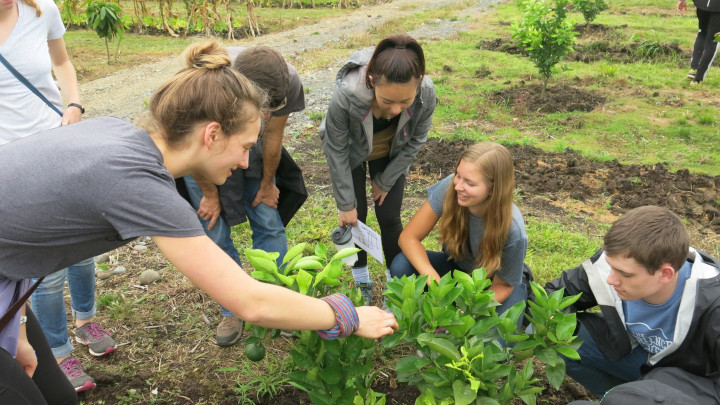Access to clean drinking water has long been an issue in the developing world, and the
impacts of unclean water on these communities cannot be overstated. A crucial component to
saving lives as well as improving quality of life is water disinfection. However, this problem is
made difficult by the fact that for water systems in developing countries, particularly rural ones,
there is a lack of access to the same funds, testing equipment, and electricity that make water
disinfection feasible in developed nations. As a result, a creative solution must be utilized to
achieve water disinfection in these communities. This is where the Calvin Clean Water Institute
comes in: combining knowledge across a wide variety of disciplines to help solve these
problems. We bring our academic understanding and work with knowledgeable locals to help
develop creative solutions to complex problems.
The goal for this year’s research was to investigate, with the future goal of implementing,
a passive (non-electric) chlorinator that could be used in a small (less than 500 home)
Ecuadorian community. Preliminary research indicated the suitability of the CTI-8 chlorinator for
this undertaking.
The CTI-8 chlorinator was chosen because it could be constructed easily out of PVC,
was inexpensive, and could dispense chlorine consistently. As a result, we began our research
by building the chlorinator and a model system to test it in. Afterwards, we began collecting
large quantities of data about the chlorinator to understand its operation and capabilities. To do
this, the flow rate of water through the model system was varied, as were other parameters to
determine the behavior of the CTI-8. The effluent chlorine concentrations were measured using
a DPD pillow and a visible spectrometer. We learned that by varying the chlorinator bypass an
operator can effectively exert control over the chlorine concentrations. For implementation in a
community, this can prevent microbial contamination while maintaining low enough
concentrations to prevent community rejection. This was a crucial lesson that will most likely be
used in the future implementation of chlorinators, including a possible passive chlorinator
installation in Spring of 2024.
A secondary component of my research was the use of electrolysis to create bleach,
and to design a procedure for container disinfection with the synthesized bleach solution. This
ended up being the less successful portion of the project but still led to important developments
for future research.
The electrolysis system was comprised of an electric current that was run through a saltwater
solution for 24 hours, which results in a concentrated bleach solution. Several trials were run,
with the intent to create a concentrated bleach solution. Although none of the trials produced the
original target concentrations, modifications in the process resulted in a marked improvements
as the summer progressed.
Although I succeeded in meeting the goals that my advisors and I set for summer research,
there were significant setbacks along the way. It took days to begin collecting reliable data for
the chlorinator due to an unexplained spike in chlorine concentrations, and the electrolysis
produced unexplainably low bleach concentrations.
Overall, research was an incredible experience. The most important lesson I learned from this
project is that the solution to any real-world problem is extremely complex. As engineers, we are
prone to the sin of pride, where we think we have the answers necessary to solve every
problem. In reality, real world problems are necessarily complex and multifaceted, and problems
that are worth solving can require weeks, months, or even years to develop adequate solutions.








